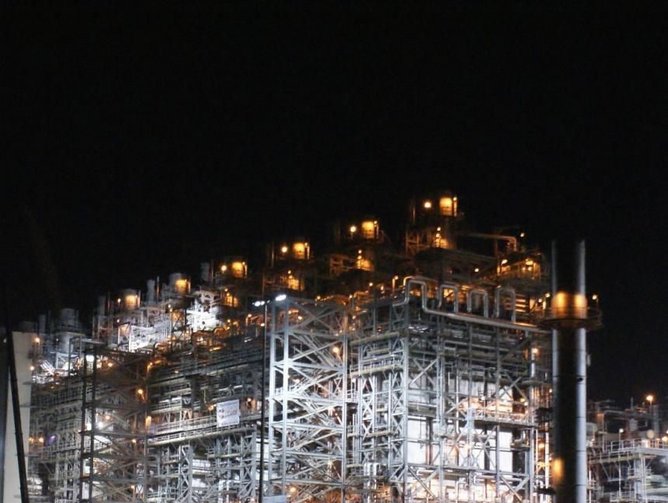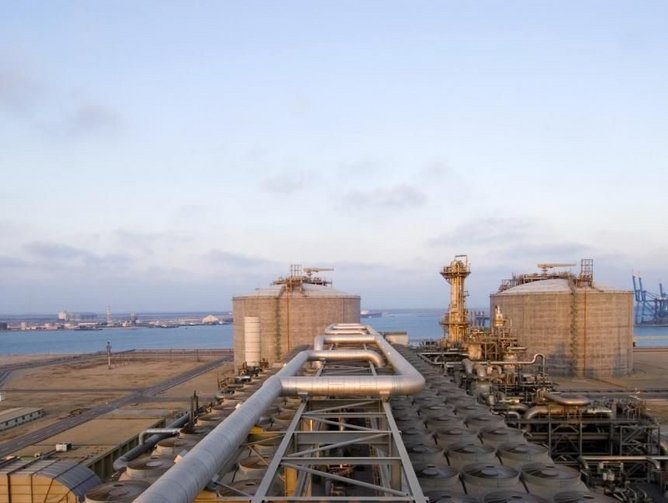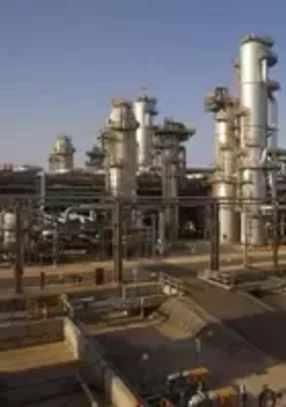KBR has a long and distinguished history as a contracting engineering and construction company. Its antecedent companies MW Kellogg and Brown & Root date back to the early 20th century, and though they did not merge until 1998 these are the names still indelibly etched in the consciousness of the worldwide contracting sector. Today’s KBR was formed in 2006 when it spun out from Halliburton and floated on the New York Stock Exchange.
In mid-2014, KBR streamlined its operations to focus on core strengths of technology, engineering, procurement and construction company serving the global hydrocarbons and government services industries. Its three distinct global businesses: Technology & Consulting; Engineering & Construction; and Government Services, are all in evidence as KBR seeks to lead the field in contracting and consulting, however the Middle East is currently offering a key set of opportunities.
Over the years KBR has been involved in many projects in the Middle East region, largely as a global operator working out of its Houston, Texas headquarters; and its London Operating Centre. Right now, that is all changing, and KBR is pursuing a strategy of getting a whole lot closer to each of the countries in the region. A key move was the appointment in March 2015 of Jay Ibrahim, a Lebanese-born American, to the post of President, Engineering & Construction, Middle East and North Africa (MENA). Ibrahim now leads KBR’s expansion in the region, in upstream, midstream and downstream projects.
Prices and producers
The current slump in hydrocarbon prices is a constraining factor on oil producers wherever they are, admits Graham Hill, KBR’s recently appointed Executive Vice President responsible for Global Business Development and Strategy. But that’s not the whole story. “People think the industry comes to a halt as a result. It does not!” he insists, and with 38 years of contracting experience in global hydrocarbons, his analysis is worth listening to.
“As the oil price falls, he says, priority is given to those areas of the world where operators can still make money at the prevailing market rates. “We must not forget that the cheapest oil in the world is produced from onshore oil production in the Middle East. Their offshore oil is also relatively cheap because the waters are shallow and benign. The rest of the world is producing oil from deep and hostile waters, fields a long way from shore, using extensive subsea techniques and complex equipment like FPSOs, often in hostile conditions.”
“Beyond accessibility and proximity lies capacity. Look forward a century, and whatever progress renewables have made there will still be a demand for hydrocarbons. Where will these be found? Many oilfields will have come and gone but the one territory that will be still there in “the endgame” will be the Middle East”.
“There’s a lot of talk about shale,” he continues, pre-empting the inevitable question, “but shale is relatively expensive to produce, especially if you’re not in the USA. There they have the pipeline and road infrastructure to support it but in other places, the logistics both of production and delivery to the market are daunting, even if you can get past the environmental and social hurdles we all know about.”
Jay Ibrahim does not think the oil price is a major issue for his clients. It’s more a matter of the ‘social burden’ that is placed on oil revenues, in countries that by and large lack other sources of foreign exchange. That means anything from infrastructure to health and education. “Though the cost of production, and the social burden vary from country to country, with costs typically under $20 a barrel, most Middle East countries claim there is about $50 per barrel social burden. This means that, for most of the countries, $60-80 is their breakeven point.”
So at the current prices, fluctuating between $40 and $50 per barrel, something has to give, as manifested in the June decision to shelve the 11 regional football stadia that Saudi Arabia is planning to build. “They are also sweating their facilities to get more out of them. When the oil prices go down most operators, including those in the Middle East, think about how much juice they can get out of their existing facilities by doing revamping and debottlenecking projects as opposed to spending a lot of money on new capital projects.”
At the end of the day, using Micawber economics the Middle East is a happy oil producer because it is among the few selling at more than the cost of production. It also has to keep the wells flowing, and the exploration drills turning because true diversification is some way from being realized. For now the diversification is itself oil based, as the Gulf states spend and spend on downstream derivatives and chemicals.
This again represents an opportunity for KBR. “When you have these cheap feedstocks you have a competitive advantage right up the value chain,” says Hill. Every part of the Middle East has a further advantage, its location. Though it is generally lightly populated, it has good links to fast developing markets elsewhere: “They can easily ship to the developed and developing worlds where these materials are in demand for transportation and advanced manufacturing.”
Structuring to win
To say that KBR has good standing as a reliable partner for the international oil companies (IOCs) would be a considerable understatement. It built the first platform out of sight of land, in the Gulf of Mexico, in 1947 and has been at the forefront of some of the major milestones in the global hydrocarbons industry, claiming to have designed and constructed no less than a third of the world’s LNG production.
Nevertheless, despite having a second-to-none presence in the Middle East, before this year KBR engaged with the region very much as a global partner rather than a local player. In the past KBR was executing specific projects in the ME as opposed to building sustainable continuous business in the various countries and primarily in engineering and construction (E&C) projects.
From this year, this approach has changed, as reflected in Jay Ibrahim’s appointment and the establishment of a regional headquarters in Abu Dhabi. “We have been sub-scale in relation to the number of projects we deliver,” he admits, “but from here on in our operating model will be to work as a local business in each of the counties of interest. Our global operating model dovetails with this approach, so where we do major projects we draw on our global resources, but keep the interface on a local scale working through our offices in each of these countries. We want to have a strong local business that will facilitate the global implementation!”
This is not just typical ‘think global act local’ rhetoric. It represents a deep structural change in the organization, Hill emphasizes: “For a start we intend to grow organically in the region, probably making some additional strategic investments and focusing on winning a portfolio of new projects. From there we will move forward in a synergistic way.
“Abu Dhabi will be the hub - Jay has been a resident there for many years. But, unusually for the industry, we do already have a global outsourcing office in Dubai.” The Dubai office, he explains, employs many people supporting back office functions and shared services – and coordinating operations well beyond the Middle East.
Instead of looking to Houston, Texas office/headquarters to provide the expertise and resources it needs, KBR is increasingly autonomous in the Middle East and Asia-Pacific regions. In particular, it has been investing heavily in India. “India is a vital part of the supply chain for projects in the Middle East,” says Graham Hill. “It is geographically close. A huge number of Indian and other Asian nationals work in the industry, from labor to supervisory and board level. The Middle East countries have small populations, and to supplement the indigenous population they naturally employ people from the subcontinent.”
Though India still retains its low-cost advantage, there are many other compelling reasons why KBR has chosen to establish technology centers there. Among the requirements sourced from India are engineering and procurement services, construction labor, construction supervision, technology, licensing, chemical sales, equipment manufacturing, specialty items and many others.
“We do all these things out of India because it is a very competitive country, a largely English-speaking market, and has a legal system based on English law.” And in order to avoid any short term supply side constraints KBR has deliberately chosen diverse locations, at present Pune in the west, Chennai in the east and Delhi in the north.
Sadara and beyond
So what is the current state of KBR’s involvement in the region? By far its part in the Saudi Aramco/Dow Chemical Sadara project at Jubail in Saudi Arabia. Sadara has become the world's largest chemical complex ever built in a single phase. With 26 integrated world-scale manufacturing plants, over three million metric tons of capacity per year, and a total investment of about US$20 billion, it is anticipated that Sadara will become a Fortune 500 company within the first year of full operation – 2016/17.
KBR’s part in this massive project was to execute the project feasibility and pre-FEED (front-end engineering and design) for the entire complex, as well as the FEED scopes of several major assets. KBR is also the licensor of its Aniline technology for the project. KBR is currently the project management contractor (PMC) and has about 700 specialized personnel on site as the project goes into the commissioning phase.
The company will continue to have significant numbers in Jubail as part of the integrated project management team assisting Dow and Aramco during the final stages of the project, says Ibrahim. “We have been engaged on that project for five or six years.” Sadara has scored a lot of superlatives, not least clocking up 80 million construction man-hours without a Lost Time Incident (LTI). That achievement had nothing to do with luck, he insists. The KBR on-site team performed hundreds of joint safety walkthroughs with the project management team and their construction contractors.
The same culture is applied in the other major projects in the region, such as the Jazan refinery and terminal, again for Saudi Aramco. In 2012 KBR was awarded a contract for FEED and PMS services to develop the process design, layout, integration and optimization of the facility, develop equipment and material specifications, the preparation of EPC bid packages and the development of a construction estimate for the refinery.
Other major projects include the Yanbu Aramco Sinopec Refining Co. (Yasref), a joint venture between Saudi Aramco and China Petrochemical Corporation (Sinopec). It’s a refinery with the capacity to process 400,000 barrels per day (bpd) of Arabian Heavy crude and produce 90,000 bpd of gasoline, 263,000 bpd of ultra-low-sulphur diesel, 6,300 metric tons per day (mtd) of coke and 1,200 mtd of sulphur. “We provided a team to supervise the EPC on that, and the refinery started producing in June this year.”
The list goes on, including the latest LNG Expansion for Sonatrach in Algeria, illustrating the depth and breadth of KBR’s work for the Region and its flexibility in terms of partnership models. For example there’s a joint venture between KBR and a local Saudi company AYTB, which provides fully integrated technical, logistical services and industrial solutions for the Hydrocarbons sector. This is less a construction and more of a smart planning and maintenance operation, he says, but it involves more than 300 KBR employees. In a further JV operation with a local company, AMCDE, KBR performs services for the GES (general engineering services) Contract – onshore O&G, as well as its offshore maintain potential (MPP) contract – Offshore O&G for Saudi Aramco.
Risk and reward
All in all in, KBR has currently close to 2,000 people working on various projects and JVs in Saudi Arabia, its largest presence in the Middle East for now. However Jay Ibrahim is aggressively looking at potential partnerships in Oman and Kuwait. His long experience will be indispensable here. Kuwait Oil company (KOC) has a different tendering pattern from its neighbours, awarding a single, five year, project management consultancy (PMC) deals worth in the region of $400 million.
That’s great if you are the winner, he says, but if you are not, then you are in the cold till the next round. In the UAE, the tendency is to issue separate PMC deals for each project – more work, more opportunities. He is used to widely differing types of negotiation, and insists that the really important thing in the Middle East is to be able to win long term relationships.
“I have been in the Middle East for 21 years and I have seen it all! One model can’t work for all clients.” The Middle East is what he calls a lump sum turnkey (LSTK) market where the client seeks to pass on the majority of the risk to the EPC partner. There may be ‘better’ models when benchmarked against western economies, but western regulatory frameworks may not fit so well in the Middle East.
It comes back to fundamentals. The Middle East continues to attract money, as evidenced by the interest of Chinese contractors like Sinopec and Indian players like Larsen and Toubro and Punj Lloyd, which are taking an increasing interest, following on the heels of the Korean contractors who picked up $15 billion of contracts seven years ago. This inward investment is good news for KBR, which is ready to provide Pre-FEED, FEED, Project Management, and even EPC, construction supervision and maintenance services.
His game plan is to open offices in countries like Qatar, Oman, Bahrain and Kuwait – as well as Saudi and the UAE. One other tempting market remains; in Iraq KBR would like to grow the footprint it has alongside the IOCs at the large oilfields of Rumaila and Majnoon (where KBR is already building the camp for Shell). He also is keeping a close eye on Iran. Sanctions make direct engagement impossible right now, but he sees engagement with Iran as an important keystone of KBR’s ambition to be a major local player in the Middle East. With the rapid thaw in Iran’s relationship with the west, a KBR’s presence in Teheran might not be too distant a prospect.








